Cappadocia in central Turkey is one of the most unusual and beautiful places you can visit. The landscape looks like another planet, with “fairy chimneys,” cave homes, and sweeping rock valleys. If you want striking views, unique activities, and rich history, put Cappadocia on your list. This guide gives you clear, practical information to plan your trip, from how the landscape formed to the best time to go, where to stay, and what to see and do.

What is Cappadocia and Where Is It Located?
Cappadocia is not a single town. It’s a historic region in central Turkey, mostly within Nevşehir province. Many people think of Göreme when they hear Cappadocia, but the area includes several towns and cities like Nevşehir, Kırşehir, Niğde, Aksaray, Kayseri, and Avanos. It lies southeast of Ankara and is a few hundred kilometers from the Syrian border. The tourist areas are long-established and safe.
In Turkish, Cappadocia is “Kapadokya” (pronounced “Cappa-DOK-ya,” with a strong “k”). Many believe the name comes from a Hittite term meaning “land of beautiful horses.” For thousands of years, this area has been home to many cultures, including the Hittites and Assyrians, who valued its location and unusual rock formations.
How Did Cappadocia Form? A Brief Geological and Cultural History
Cappadocia’s fairy chimneys and caves formed over millions of years. Long ago, volcanoes like Mount Erciyes, Mount Hasan, and Mount Melendiz erupted again and again, covering the land with soft ash called tuff. Wind and water slowly wore away this soft rock, leaving harder caps of basalt on top. This process shaped the tall cones and “mushroom” rocks you see today, sometimes with one, two, or even three caps.
People also shaped Cappadocia. Early settlers found the soft rock easy to carve. From Hittite times onward, locals created cave homes, castles like Uçhisar, and underground cities such as Kaymaklı and Derinkuyu. Some of these go eight levels deep and could shelter thousands. Early Christians used them to hide during times of danger. Rock-cut churches and monasteries, many painted with colorful frescoes, still stand today and show a long Christian past in a mainly Muslim country.
Major Towns and Regions in Cappadocia
Several towns make good bases, each with its own feel and services. The most famous is Göreme, which sits in the center of many sights. It has many cave hotels, plenty of places to eat and shop, and great sunrise viewpoints for balloon watching, often very close to the hotels.
About 10 minutes away is Uçhisar, built around Uçhisar Castle, the highest point in the area. It offers wide views and many upscale hotels. Balloons tend to pass a bit farther away here. If you want peace and comfort, Uçhisar is a solid pick.
Avanos, between Göreme and Uçhisar, is known for pottery made from red clay taken from the river. You can visit workshops and try making your own piece. The town also has a colorful umbrella street and a strong craft scene.
Other places include Ürgüp, which feels a bit quieter with unique hotels, and villages like Ortahisar and Çavuşin, where you can see traditional life and old rock homes. If you have time, staying in both Göreme and Uçhisar gives you two different views of the region.

When Is the Best Time to Visit Cappadocia?
You can visit all year. Each season changes the look and feel of the landscape. Your best time depends on what you want: steady weather for ballooning, fewer people, or special events.
Spring (April-May) and fall (mid-September-mid-November) are ideal. Days are warm, nights are cooler, and crowds are smaller than in summer. Spring brings wildflowers. Fall brings golden colors.
Winter (December-March) is cold, often snowy, with low prices and very few crowds. Snow on the fairy chimneys looks amazing in photos. Summer (June-August) is hot and busy, with higher hotel prices, but balloon flights run more often due to steady weather.
Seasonal Weather Patterns and Ballooning Conditions
Summers are hot and dry. Winters are cold with snow. Balloon flights depend on wind and safety checks.
Spring and fall: Mild days and cool evenings are great for hiking. Balloon flights often go ahead, though spring can bring some wind and early fall can still feel warm.
Summer: Expect 27-32°C (80-90°F) during the day. It’s hot for outdoor walks, but balloon rides are more likely to run. A hotel pool helps a lot after a long day out.
Winter: Temperatures dip below freezing, and snow is common. The scenery is beautiful and quiet, but balloon flights cancel more often. Pack warm layers and plan for possible schedule changes.
Sunrise is special in any season. Even in summer, bring a light jacket for early mornings.
Cappadocia Festivals and Special Events
Your trip can feel extra special if it lines up with local events. Turkey’s calendar includes national holidays, religious celebrations like Eid al-Fitr (Şeker Bayramı) and Eid al-Adha (Kurban Bayramı), and many local fairs. Dates for religious holidays move each year.
Local events in Cappadocia may include harvest festivals, wine events, and craft fairs, especially in places like Avanos. Check dates closer to your trip or ask your hotel or a local tourism office when you arrive. Joining these events can give you a closer look at everyday life and traditions.
How Many Days Are Recommended for a Cappadocia Trip?
Plan at least 3-4 days. This gives you time for a balloon ride (with backup mornings in case of weather), main valleys, historic sites, and some relaxed time.
Many visitors like 4-5 days with 3-4 sunrise chances. Early starts are common, so extra days help you avoid burnout. You can also revisit favorite spots.
Some suggest five full days for a first trip. You can split your stay between Göreme and Uçhisar, explore more valleys and open-air museums, and visit an underground city without rushing.
Suggested Itineraries: Short Stays to Week-Long Visits
Pick your plan based on time and interests:
Short & Sweet: 2-3 Days
Two days can work if weather cooperates, but three days is safer.
- Day 1: Arrival & Göreme. Fly to Kayseri or Nevşehir, check in to a cave hotel in Göreme. Walk the town and visit Göreme Open Air Museum for rock-cut churches and frescoes. Dinner in town.
- Day 2: Balloons & Valleys. Balloon ride at sunrise (book early). After breakfast, see Love, Pigeon, or Rose Valley. Try a horseback ride in the afternoon.
- Day 3: Underground City & Views. Visit Kaymaklı or Derinkuyu. Go up Uçhisar Castle for wide views. Shop, sip a last Turkish coffee, and head to the airport.
Classic Cappadocia: 4-5 Days
More time means a calmer pace and extra sights.
- Day 1-2: Follow the 2-3 day plan, including the balloon ride and Göreme sights.
- Day 3: Green Tour Day. Join a “Green Tour” covering Ihlara Valley, Selime Monastery, and an underground city if you missed one. It’s a longer drive but shows a different side of the region.
- Day 4: Avanos & Pasabag. Visit pottery studios in Avanos and try the wheel. See Pasabag (Monks Valley) and nearby Zelve Open Air Museum. End at Sunset Point.
- Day 5: Easy Morning & Departure. Sleep in, enjoy a hammam or revisit a favorite spot, then fly out.
Extended Exploration: 6+ Days
With more time, you can split stays and add lesser-known spots.
- Follow the 4-5 day plan.
- Stay a night or two in Uçhisar for new views and upscale stays.
- See Devrent (Imagination Valley) and Çavuşin village.
- Add ATV rides, longer hikes, or a cooking class.
- Take day trips nearby if you still have time.
Mix and match based on your interests. Add travel time between places and build in weather backups for balloons.
Getting to Cappadocia: Transport Options by Air, Road, and Rail
The region feels remote but is easy to reach. Most visitors fly in.
From Istanbul, flying is fastest and often cheap. Turkish Airlines and Pegasus run frequent flights, sometimes from around £40 one way. Flying saves many hours compared to bus or train.
Overnight buses run from big cities and are cheaper but take a long time. Train routes don’t directly serve the main towns, so trains are less practical for most travelers.
Which Airports Serve Cappadocia?
Two airports serve the area:
- Kayseri Erkilet Airport (ASR): The larger hub, about a 1-hour drive to Göreme. Many flights from Istanbul and other cities land here. It’s often the main gateway.
- Nevşehir Kapadokya Airport (NAV): Closer to Göreme (about 40 minutes), but with fewer flights. If the schedule fits, this is a bit quicker to reach your hotel.
Check both for price and timing. Most hotels can set up transfers from either airport.
Are There Direct Buses or Trains from Major Cities?
Yes, direct buses run from cities like Istanbul, Ankara, and Antalya to Nevşehir or Göreme. Companies include Metro Turizm, Kamil Koç, and Nevşehir Seyahat. Trips from Istanbul can take 10-12 hours or more. Buses are comfortable, often with Wi-Fi, but plan for a long ride.
Trains don’t connect directly to the main towns in a simple way for tourists. If you prefer ground travel, buses are the better choice.
Tips for Transfers and Private Car Rentals
After landing at Kayseri (ASR) or Nevşehir (NAV), you’ll need a ride to your hotel. Options include:
Airport Transfers:
- Hotel-Arranged: Easy and reliable. Most hotels will book shared or private transfers that match your flight times. Ask when you book your room.
- Shared Shuttles: Cheaper than private rides. Expect multiple stops along the way.
- Private Shuttle/Taxi: Fast and direct, good for groups or lots of luggage. Pre-book for better rates.
Private Car Rentals:
- Pick-up at the Airport: Rent at ASR or NAV if you want to explore on your own. Both big brands and local firms operate here.
- Driving: Roads are good and not very busy. A car gives you full freedom for sunrise spots, sunset points, and hidden places. GPS works well.
- Parking and Insurance: Town centers like Göreme can be tight for parking in peak season. Make sure your rental has good insurance.
- Driver Hire: If you don’t want to drive, you can hire a car with a driver through your hotel or a local operator.
Pick based on your budget and how independent you want to be.
How to Get Around Cappadocia: Local Transportation Explained
Once you arrive, getting around is part of the fun. Town centers like Göreme are walkable, but many sights are spread out. You can rent a car, join tours, or use buses and taxis.
Car Rentals and Driving in Cappadocia
Renting a car is a great choice if you want freedom. Roads are smooth and easy to follow. With a car, you can reach sunrise points, quieter valleys, and move between towns like Göreme, Uçhisar, and Avanos at your own pace. You can rent right at the airports. Parking can be tight in busy spots, but overall driving here is straightforward and rewarding.
Public Transport, Shuttles, and Taxis
If you don’t want to drive, you have other options:
Public Transport:
- Dolmuş (minibuses): Run between main towns like Göreme, Uçhisar, and Avanos. Cheap but not very frequent and usually stop early in the evening.
Shuttles:
- Hotel Shuttles: Many hotels can arrange rides to key sights. Handy if you have a short list to see.
Taxis:
- Availability: Your hotel can call one if you don’t see any nearby.
- Hire by the hour: Agree on a price for half-day or full-day sightseeing if you want flexibility without renting a car. Prices vary with season and distance.
Many people mix these options: a tour for long distances, local buses for short hops, and taxis for convenience.
Guided Tours vs. Independent Exploration
Both choices work well here.
Guided Tours:
Why join a tour:
- Convenience: Transport, tickets (often), and timing are handled for you.
- Time-saving: Tours cover many big sights in a day. Common routes include the “Red Tour” (Göreme Open Air Museum, Pasabag, Avanos, Devrent, Uçhisar Castle) and the “Green Tour” (Ihlara Valley, Derinkuyu, Selime Monastery). Some offer a “Blue Tour.”
- Local insight: Guides share history and stories you might miss.
- Meet others: Group tours are social.
- Special options: ATV rides, horseback tours, and balloon packages are easy to book.
Book through your hotel, local agencies in Göreme, or online platforms.
Independent Exploration:
Why go on your own:
- Full flexibility: Set your schedule, stay longer where you like, and change plans with the weather.
- Personal focus: Shape your day around hiking, photos, or specific sites.
- Costs: For small groups, a rental car can be cheaper than several tours.
- Hiking freedom: Many valleys are easy to explore on your own. Wear good shoes and carry water.
Many travelers do a mix: a tour for far-off spots like Ihlara and self-guided time around Göreme.
Where to Stay in Cappadocia: Hotels, Cave Suites, and Villages
Staying in a cave hotel is a highlight here. Many hotels are carved into the rock or fairy chimneys. Some date back centuries. You can wake up to views of balloons and rock spires right outside.
There are places for every budget, from simple inns to luxury caves. Many hotels have rooftops set up for sunrise watching, with carpets and pillows that make great photo spots.
Popular Towns for Accommodation: Göreme, Ürgüp, Uçhisar, Avanos
Pick a base that matches your style:
- Göreme: The main hub with the most hotels, restaurants, and agencies. Many sights are close by. It’s the best place for close-up balloon views at sunrise.
- Uçhisar: Built around the castle, with quiet streets and high-end stays. Views are wide and beautiful. About 10 minutes from Göreme.
- Ürgüp: A bit farther out with unique cave hotels and fewer crowds.
- Avanos: Great for pottery lovers and a calmer, local feel.
If you have five or more days, split your time between Göreme and Uçhisar for two different vibes.
Types of Hotels: Cave Hotels, Boutique Inns, Family Options
What you’ll find:
- Cave Hotels: The classic choice. Rooms range from simple to very fancy. Stone walls keep rooms cool in summer and warm in winter. Many have rooftops with sunrise views.
- Boutique Inns: Small, stylish properties with local stone design and personal service.
- Family Options: Larger rooms or suites, often with pools. Always check age rules for tours if traveling with kids.
Most hotels offer generous Turkish breakfasts and can help with tours and transfers.
Top-Rated and Unique Stays
Standout places include:
- Sultan Cave Suites (Göreme): Famous terrace for sunrise photos, great service, and lovely cave rooms. Sister to Aza, Kelebek, and Seki Cave Hotels.
- Koza Cave Hotel (Göreme): Family-run, cozy, with the highest rooftop in Göreme. Great for balloon views.
- Aza Cave Cappadocia Adult Hotel (Göreme): Adults-only, stylish suites, and a scenic pool. They even have a sushi restaurant.
- Museum Hotel (Uçhisar): A Relais & Châteaux property set in a restored complex with antiques and a heated outdoor pool, plus huge views.
- Argos in Cappadocia (Uçhisar): Luxurious rooms (some with indoor cave pools) and a fine restaurant, set in a former monastery.
- Local Cave House Hotel (Göreme): Known for its dramatic pool setting beside fairy chimneys.
- Kelebek Special Cave Hotel (Göreme): Cliffside views and charming cave rooms.
- Imperial Cave Suites (Göreme): Good-value rooms, an indoor pool, underground hammam, and on-site dining.
- Divan Cave Suites (High End): Rooftop terrace with wide balloon views.
- Grand Elite Cave Suites (Midrange): Great breakfast and a pool; well-liked by guests.
For busy months, book your hotel and balloon ride early, as both sell out fast.
Where to Eat in Cappadocia: Cuisine and Recommended Restaurants
Food is a big part of travel in Turkey. In Cappadocia, you’ll find classic dishes from Anatolia, from slow-cooked meat in clay pots to fresh flatbreads and sweets. Restaurants range from cozy cave spots to places with sweeping terraces.
Typical Dishes: Testi Kebab, Gözleme, and Regional Specialties
Don’t miss these:
- Testi Kebab (Pottery Kebab): Meat or veggies cooked in a sealed clay pot with spices. The server breaks the pot at your table. Many places need advance orders. Veg options are common.
- Gözleme: Thin flatbread stuffed with choices like cheese, spinach, potato, or minced meat, cooked on a griddle.
- Mantı (Turkish Ravioli): Tiny dumplings with spiced meat, served with yogurt, garlic, and butter with red pepper flakes and mint.
- Dondurma (Turkish Ice Cream): Thick, chewy texture thanks to salep and mastic. Sellers often perform fun tricks.
- Meze Platters: Small plates like hummus, eggplant salads, stuffed vine leaves, olives, and cheeses.
- Local Wines: Cappadocia makes wine from local grapes; try both reds and whites.

Breakfast spreads are big, coffee is strong, and tea is everywhere.
Notable Restaurants and Cafés by Town
Good picks by area:
In Göreme:
- Seten Restaurant: At Sultan Cave Hotel. Nice spot for dinner and pre-dinner drinks on the rooftop.
- Dibek Restaurant: Traditional food in a 475-year-old building. Sit on floor cushions. Order pottery kebab ahead.
- Topdeck Cave Restaurant: Small, popular cave restaurant with Turkish dishes. Book ahead.
- Firin Express: Casual place for Turkish pizza and pottery kebab.
- Namaste India: Tasty Indian food if you want a change.
- Fat Boys: Loved for döner kebab rolls.
- Cappadocian Cuisine Restaurant: Try the künefe dessert.
- The Grape: Broad menu with salads, soups, seafood, meat, and homemade sweets; lovely evening views.
- Kebabzade Restaurant: Classic Turkish grills, pottery dishes, and fresh bread at fair prices.
- Pumpkin Goreme Restaurant: Part restaurant, part art space.
- Kaira Rooftop & Bar: At Artemis Cave & Suites. Turkish dishes, sunset views, and music.
In Uçhisar:
- Reserved Cappadocia: Stylish restaurant with a full bar and terrace seating; fresh, well-presented plates.
- Lila Restaurant (Museum Hotel): Great views for a special meal.
- Peri Evi Cafe: Tiny family spot facing Uçhisar Castle; grab a fresh lemonade with a view.
In Avanos:
- Avanos Valley Dining Experience: Often arranged by local operators; can include a home-cooked meal and local recipes.
At busy viewpoints, ask drink prices before you order to avoid surprises. Simple-looking places can serve excellent food, so don’t judge only by looks.
Local Markets, Turkish Coffee, and Dessert Experiences
Local Markets:
Markets in towns like Avanos and Göreme sell fresh produce, cheeses, olives, and spices. You can also find gözleme stands and other snacks.
Turkish Coffee:
Served in small cups with grounds at the bottom. Sip slowly and enjoy it with water. Some cafes offer fun fortune readings from the cup.
Dessert Experiences:
- Baklava: Layers of filo with nuts and syrup or honey.
- Turkish Delight (Lokum): Chewy sweets in many flavors like rose, lemon, and pistachio.
- Künefe: Warm, cheesy dessert with shredded pastry and syrup, often topped with pistachios.
- Tres Leches Cake: Some cafes serve a lovely version, showing how varied the dessert scene can be.
Seek out small coffee shops and bakeries in Göreme for a quiet break and a sweet treat.
Top Things to Do in Cappadocia
Cappadocia blends nature, history, and culture. From balloon rides to underground cities and valley hikes, there’s plenty for everyone.
Hot Air Balloon Rides: Booking, Costs, and What to Expect
A balloon ride at sunrise is the headline experience for many visitors. Hundreds of balloons lift off and drift over the valleys in soft morning light.

Booking Your Flight:
Book early, especially in busy months or if you have only a few days. Trusted companies include Kapadokya Balloons, Turkiye Balloons, Turquaz Balloons, and Royal Balloon. Hotels can help you reserve.
Costs:
Prices change by season and demand. In summer, expect over 250 Euros per person. In winter, prices can drop to around 100 Euros. Compare what each company includes (transfers, breakfast, toast at the end).
What to Expect:
- Early start: Pick-ups are before dawn.
- Weather rules: Flights depend on wind and safety. If canceled, companies usually decide the day before, but morning changes can happen.
- Refunds: Weather cancellations come with full refunds. Having 3-4 mornings increases your chances to fly.
- The ride: Pilots often skim the valley floor and also rise high for wide views. Many flights end with a toast and a certificate.
- Photos: The basket can get crowded for photos. Many photographers ride once for the experience, then shoot from the ground at sunrise on other days.
Even if you don’t fly, watching from a rooftop or viewpoint at dawn is unforgettable.
Major Valleys: Love Valley, Rose Valley, Red Valley, Pigeon Valley
Each valley has its own look and feel. Hike, ride a horse, or take an ATV tour:
- Love Valley: Known for tall, unusual rock shapes. A favorite ground spot for balloon photos at sunrise.
- Rose Valley & Red Valley: Famous for pink and red tones that glow at sunrise and sunset. The hike can take a few hours and includes old churches and cave homes, plus tea stops.
- Pigeon Valley: Links Göreme and Uçhisar. Dovecotes cut into cliffs once collected pigeon manure for farming. Easy walking paths and great photo stops with “evil eye” trees.
- Devrent (Imagination) Valley: No churches here, just rocks shaped like animals and figures. Fun for kids and anyone with a playful eye.
- Ihlara Valley: A green canyon with a river, around 40 minutes from Göreme. Cooled by shade and water, with many rock churches and frescoes.
Many valleys are reachable by car, but walking gives you the best sense of the landscape.
Göreme Open Air Museum and Other Historical Sites
History and geology come together here. The top site is the Göreme Open Air Museum, a UNESCO spot.
Göreme Open Air Museum:
Just outside Göreme, this complex includes churches, chapels, and monasteries carved into rock from the 10th-12th centuries. The frescoes are bright and well preserved. Go early to avoid crowds. There is an entry fee, plus a separate fee for the Dark Church (Karanlık Kilise), which has especially vivid paintings.
Other Historical Sites:
- Zelve Open Air Museum: Near Pasabag, this large former cave town feels quieter than Göreme’s museum. It shows early architecture and paintings across a wide area.
- Çavuşin Village: An old Greek village with rock homes and halls. Many rooms sit inside a huge cliff above the town. Wander and explore the old dwellings.
- Selime Monastery: Often visited on the Green Tour. The largest rock-cut monastery in the area looks like a cathedral carved into the cliff.
Wear sturdy shoes. Expect stairs, slopes, and lots of walking.
Underground Cities: Kaymaklı, Derinkuyu, Özkonak
Below Cappadocia lies a hidden network of ancient underground cities. Locals used them as shelters in times of danger. Over 30 have been found, and several are open to visitors.
- Kaymaklı: One of the widest, with eight levels (five open). It had living quarters, a kitchen, a church, and wine rooms. The route is clear to follow, and a short film explains the history.
- Derinkuyu: The deepest city open to visitors, also with eight levels. It’s very popular and included on many Green Tours. Expect narrow tunnels and tight stairs.
- Özkonak: Smaller and less crowded. Above the exit, you’ll find cave homes in a grassy area. Arrive early to avoid buses. A headlamp can help in darker corners.
There is a small fee to enter each site. These places were used only during threats, not for daily life, which makes them even more striking.
Uçhisar Castle and Panoramic Viewpoints
Uçhisar Castle is the highest point in Cappadocia. It’s a giant rock spire filled with rooms, tunnels, and windows. Many inside areas are closed now, but you can climb to the top for 360-degree views over the valleys and towns. It’s a favorite for sunrise and sunset photos.
Uçhisar village around the castle is full of old cave homes, many now empty. The castle sits beside the main road, so it’s easy to stop for photos. Entry costs a small fee. You’ll see many “evil eye” charms here and around town.
Other viewpoints include Sunset View Point in Göreme, good for both sunrise and sunset, and Lover’s Point, which looks over Göreme with Uçhisar Castle in the distance.
Pasabag (Monks Valley) and Fairy Chimney Formations
Pasabag, or Monks Valley, is known for its “mushroom” chimneys with twin or triple caps. It sits between Göreme and Avanos and shows some of the most striking rock shapes in the area. Early monks lived here in caves cut high into the rocks, including the St. Simeon Church linked to a famous hermit.
It gets busy in the afternoon, so go early or late for calmer visits and better light. If you arrive before opening hours, you might enter the area without a ticket. Wander the paths and find quieter corners away from groups.
Zelve Open Air Museum
Five minutes from Pasabag, Zelve was once a large cave town and monastic center from the 9th to 13th centuries. People lived here until the 1920s, when erosion made it unsafe. Today you can roam tunnels, homes, churches, and chimneys in a vast area that feels peaceful compared to more crowded sites.
Look for an outdoor stand in the parking area where you can watch gözleme made by hand and enjoy a quick snack.
Sunrise and Sunset Viewing Spots
Sunrise and sunset are the best times for color and views, especially with balloons in the sky.
Sunrise Viewing:
- Hotel Rooftops (Göreme): Many cave hotels have terraces set up for balloon watching, like Sultan Cave Suites and Koza Cave Hotel.
- Love Valley: A top ground spot to watch balloons pass low over the rock towers.
- Sunset View Point (Göreme): Works well at dawn too, with wide views over town and valleys.
- Launch/Landing Areas: Drive to balloon fields to see the set-up and takeoff up close.
Sunset Viewing:
- Sunset View Point (Göreme): Famous for evening color over the chimneys; small fee may apply.
- Rose & Red Valley: Their colors glow at the end of the day. Many start a late-afternoon hike and end at sunset.
- Uçhisar Castle: The highest point for a wide-angle sunset view.
- Crazy Ali’s (Rose/Red Valley): A casual spot with beanbags and drinks at the top of the valleys.
Bring a sweater or jacket for early mornings and evenings, even in summer.
Horseback Riding, Hiking, and Outdoor Activities
The area’s name means “land of beautiful horses,” and outdoor activities are a big draw.
Horseback Riding:
Ride through Love, Rose, and Pigeon valleys at sunrise, sunset, or midday. Tours usually last 1-2 hours and include hotel pick-up. Popular ranches like Dalton Brothers take good care of their horses.
Hiking:
Trails are everywhere, from easy walks to longer treks. Favorites:
- Rose & Red Valley: About 9 km with churches, cave homes, and tea huts.
- Ihlara Valley: Cooler, shaded paths along a river with many churches.
- Love & Pigeon Valley: Combine them for a scenic route from Göreme to Uçhisar.
Apps like AllTrails help with maps. Wear sturdy shoes and carry water.
Other Outdoor Activities:
- ATV Safaris: Great for sunset and covering more ground.
- Balloon Chasing: Follow balloons by car or on foot at dawn for photos.
- Exploring Caves: Many open caves and churches to roam in Uçhisar, Çavuşin, and Zelve.
- Vintage Car Tours: Stylish sunset drives and photos among the chimneys.
Whether you want calm walks or action-packed rides, you’ll find plenty to fill your days.
Pottery and Craft Workshops in Avanos
Avanos has made pottery since Hittite times thanks to the red clay of the Kızılırmak River. Visit workshops to watch artisans at kick wheels and try making your own piece. Smaller, family-run studios often sell true locally made goods. Look for classic designs and bright glazes, like small turquoise owls. Seeing a master throw a lidded vase is a treat.
Shopping for Local Handicrafts: Rugs, Pottery, Lanterns
Shopping is fun in Cappadocia, especially in Göreme and Avanos. Look for:
Turkish Rugs:
Known for fine patterns, strong weaves, and rich colors. Research shops that sell genuine Turkish rugs. Sultan Carpets and Galerie Ikman are popular. Some charge small fees for staged photos due to high demand.
Pottery:
Buy direct from Avanos studios for quality and authenticity. You’ll find both useful items and decorative pieces.
Lanterns:
Mosaic lamps and lanterns add color to any room. Many sizes and designs are available.
Other Handicrafts:
- Evil Eye Charms: Blue glass amulets for good luck, perfect small gifts.
- Hand-Painted Ceramics: Plates, bowls, and tiles with traditional motifs.
- Textiles: Pillow covers, scarves, and more with local patterns.
- Local Treats: Turkish delight, honey, and spices make tasty souvenirs.
Wander the town streets, browse, and pause for tea or coffee along the way.
Travel Tips for Visiting Cappadocia
Here are simple tips on safety, packing, culture, money, and more to help your trip go smoothly.
Is Cappadocia Safe for Tourists?
Yes. Cappadocia is known as a safe place for visitors. While Turkey is large and some regions are far from tourist routes, the main towns here are calm and welcoming. People are friendly and helpful. As always, keep normal travel habits: watch your bag in crowds and stay aware. Serious issues are uncommon in tourist areas.
What to Pack for Different Seasons
Pack based on weather. Check the forecast before you go.
Spring (April-May) & Fall (Mid-September-Mid-November):
Days are mild, mornings and nights can be cool.
- Layers: T-shirts, long sleeves, sweaters, and a light jacket.
- Bottoms: Jeans or comfy pants; long skirts work well too.
- Shoes: Sturdy walking shoes or hiking boots.
- Extras: Scarf, sunglasses, hat.
Summer (June-August):
Hot and dry.
- Clothes: Cotton and linen; t-shirts, tanks, shorts, light dresses.
- Swimsuit: If your hotel has a pool.
- Layer: Light sweater for early mornings and evenings.
- Shoes: Sandals for town, walking shoes for sightseeing.
- Sun care: Sunscreen, hat, sunglasses, and a water bottle.
Winter (November-March):
Cold with possible snow.
- Warm layers: Thermals, sweaters, fleece, heavy coat.
- Outerwear: Waterproof, windproof jacket.
- Bottoms: Warm pants or lined leggings.
- Shoes: Waterproof, insulated boots with good grip.
- Extras: Hat, gloves, thick scarf.
Good walking shoes are useful all year, and sunscreen helps even outside summer.
Dress Code and Cultural Considerations
Turkey blends modern life and tradition. Cappadocia is relaxed, but modest dress is appreciated in some settings.
General Dress Code:
Wear what’s comfortable in towns and tourist spots. Modest outfits are helpful in smaller villages.
Religious Sites:
Dress modestly when visiting mosques or certain churches. Women should cover shoulders and knees; bring a scarf for head covering if needed. Men should avoid shorts in mosques.
Cultural Considerations:
- Hospitality: Locals are warm and often offer tea.
- Bargaining: Polite haggling is common in markets.
- Shoes: Take them off when entering homes or mosques.
- Photos: Ask before photographing people.
- Tipping: Round up or add 5-10% in restaurants; tip guides and drivers for good service.
Small gestures of respect go a long way and lead to richer interactions.
Budgeting and Money Matters
A bit of planning helps you manage costs.
Currency:
The currency is the Turkish Lira (TL). Prices may be shown in Euros or USD in some places, but you’ll pay in Lira.
Cash vs. Card:
Hotels, many restaurants, and tour companies take cards. Carry cash for markets, small cafes, souvenirs, and tips. ATMs are easy to find in main towns.
Tipping:
5-10% in restaurants is appreciated. Tip guides, drivers, and hotel staff for good service.
Cost Considerations:
- Hotels: Good value across budgets; peak season costs more, winter is cheaper.
- Balloon rides: The biggest splurge; prices vary by season and demand.
- Tours: Red/Green/Blue tours often run £50-£100 per person; ATV and horseback rides vary.
- Food: Local spots are affordable; fine dining costs more.
- Transport: Factor fuel for rentals; shared shuttles cost less than private taxis.
Plan first for your hotel and balloon ride, then add daily costs for food, local travel, and shopping. Carry both cash and a card.
Language, Connectivity, and Local Etiquette
Language:
People speak Turkish. In tourist areas, many speak English. Learn a few words like “Merhaba” (hello), “Teşekkür ederim” (thank you), and “Lütfen” (please). A translation app helps.
Connectivity:
- Wi-Fi: Common and usually reliable in hotels, cafes, and restaurants.
- Mobile data: Buy a local SIM (Turkcell, Vodafone, Turk Telekom) or use your roaming plan.
- WhatsApp: Widely used for bookings and messages.
Local Etiquette:
- Greetings: Handshakes are common; show extra respect to elders.
- Tea culture: Accepting tea is a friendly gesture and part of daily life.
- Public behavior: Keep displays of affection modest, especially in traditional areas.
- Noise: Keep it moderate near homes and during prayer times.
- Bargaining: Be friendly and patient.
- Photography: Always ask first, especially in rural areas.
These small habits make travel smoother and more meaningful.
Frequently Asked Questions about Cappadocia Travel
Is a Hot Air Balloon Ride Worth It?
Yes. Most visitors say it’s the highlight of their trip to Turkey. Getting up before dawn to watch balloons inflate, then floating over chimneys and valleys as the sun rises, is hard to beat. Even if you’re nervous at first, most people feel calm once in the air. Flights depend on weather, so plan a few mornings to raise your chances. If you can fly, you’ll likely remember it for years.
Can You Visit Cappadocia with Kids?
Yes. Families love it here.
- Fun sights: Devrent’s animal-shaped rocks and the underground cities make great adventures.
- Outdoor time: Many trails work for kids, and horseback rides are popular.
- Cave hotels: Staying in a cave room delights children.
- Safety: The area feels safe and friendly.
- Food: Plenty of kid-friendly options like kebabs, pide (Turkish pizza), and pastries.
Check age rules for tours like balloon rides. A 4-5 day stay helps you spread out activities and keep the pace easy.
What Are the Best Photography Spots?
Cappadocia is full of photo opportunities:
- Sunrise with Balloons:
- Hotel rooftops (Göreme): Sultan Cave Suites and Koza Cave Hotel have famous terraces.
- Love Valley: Great ground-level shots of balloons over rock towers.
- Sunset View Point (Göreme): Wide scenes of balloons over town.
- Fairy Chimneys & Valleys:
- Pasabag: Mushroom-capped chimneys; go early or late.
- Rose & Red: Best at sunrise and sunset when colors glow.
- Devrent: Animal-shaped rocks.
- Historic Sites:
- Uçhisar Castle: Grand views from above and below.
- Göreme Open Air Museum: Rock churches and frescoes (check photography rules).
- Zelve Open Air Museum: Wide scenes with fewer crowds.
- Underground cities: Moody, narrow tunnels (bring a fast lens).
- Culture & Daily Life:
- Avanos workshops: Potters at the wheel.
- Carpet shops: Colorful stacks and courtyards (some charge photo fees).
- Markets & streets: Everyday scenes and crafts.
- Unique Shoots:
- Horseback rides: Riders among chimneys.
- Vintage cars: Classic style at sunset.
Local photographers offer shoots and know the best light and angles if you want standout images.


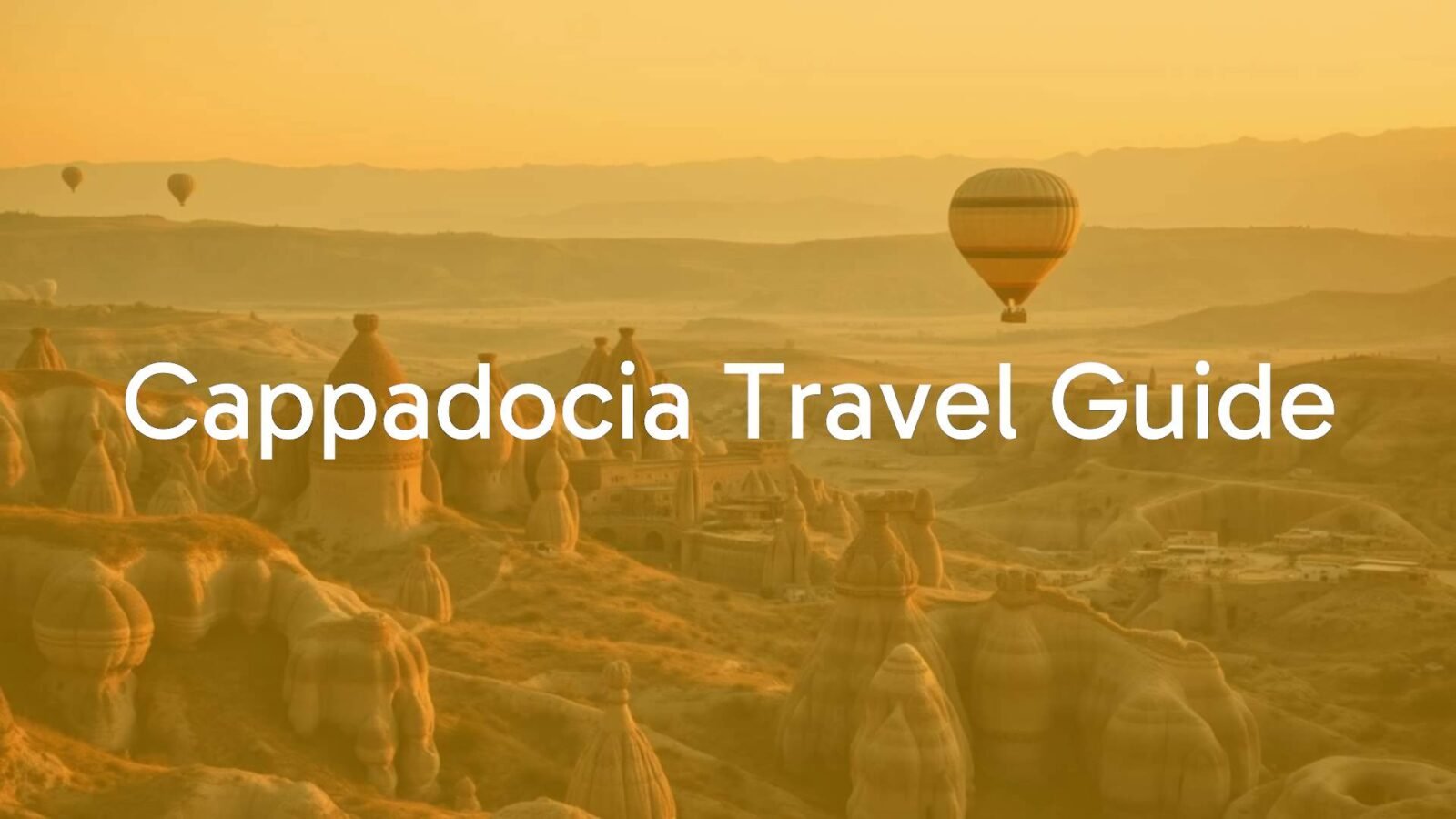


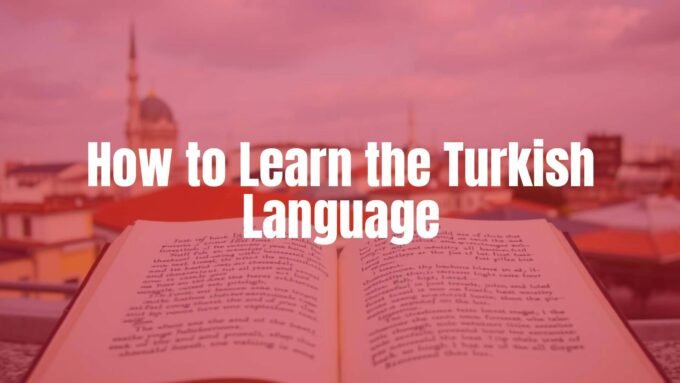



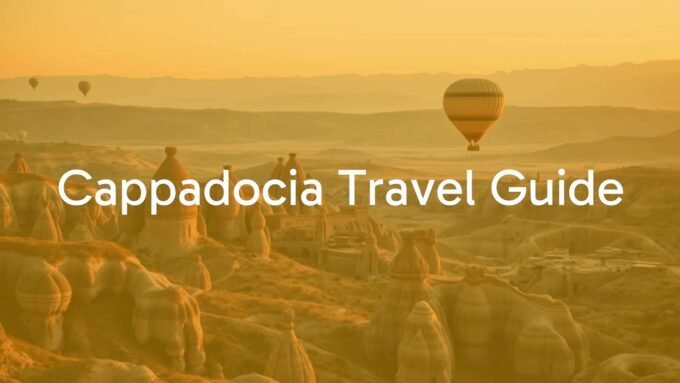
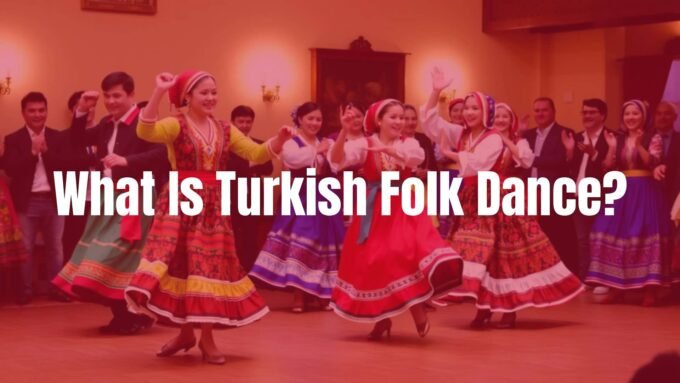
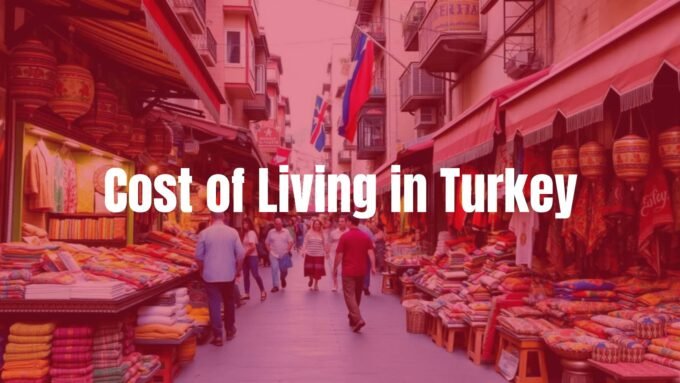



Leave a comment